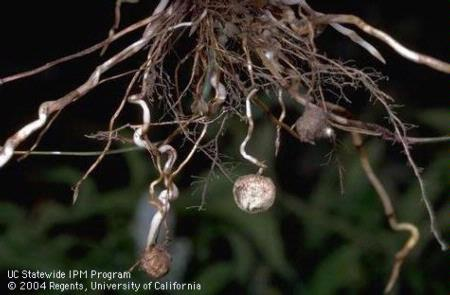
This isn’t an isolated problem in many tall fescue lawns. Nutsedge is pretty common in many areas of California. It is often associated with turfgrass because of the frequent irrigation that many turf species require.
Because it is a perennial weed, it can be very difficult to manage, particularly if there is a bank of tubers in the soil. The tubers can survive for up to 3 years in soils and once conditions are suitable, the tubers can begin the growth cycle again. If you can 
In terms of post emergent chemical control, there are only a few post emergent chemicals registered that tall fescue is tolerant of. That includes:
- *halosulfuron (available as Sedgehammer or Manage)
- sulfosulfuron (available as Certainty)
- trifloxysulfuron (available as Monument)
- *+Penoxulam (available to home gardeners as Green Light Wipe Out Tough Weed Killer for Lawns) Tall fescue is somewhat sensitive to the product.
*Home and garden product available
+Tall fescue somewhat sensitive to product
Timing of herbicide applications is critical to effect to effective control. Ideally, the herbicide application should be made as soon as the nutsedge reaches the 3-8 leaf stage. None of these products will control fully mature plants. It is likely that repeat treatments will be required in 6-8 weeks after the first. Late summer applications are less effective because by then new tubers have formed. As well, it may take multiple years to really get the nutsedge under control so persistence is important.
Finally, to be enhance whatever product you use, add a non-ionic surfactant to the spray (if allowed by the label) which will help the herbicide penetrate the waxy cuticle of the nutsedge.
For more information on nutsedge in other landscape areas, to UC IPM to view the current Pest Note: http://www.ipm.ucdavis.edu/PMG/PESTNOTES/pn7432.html
I guess I better get on that huh?